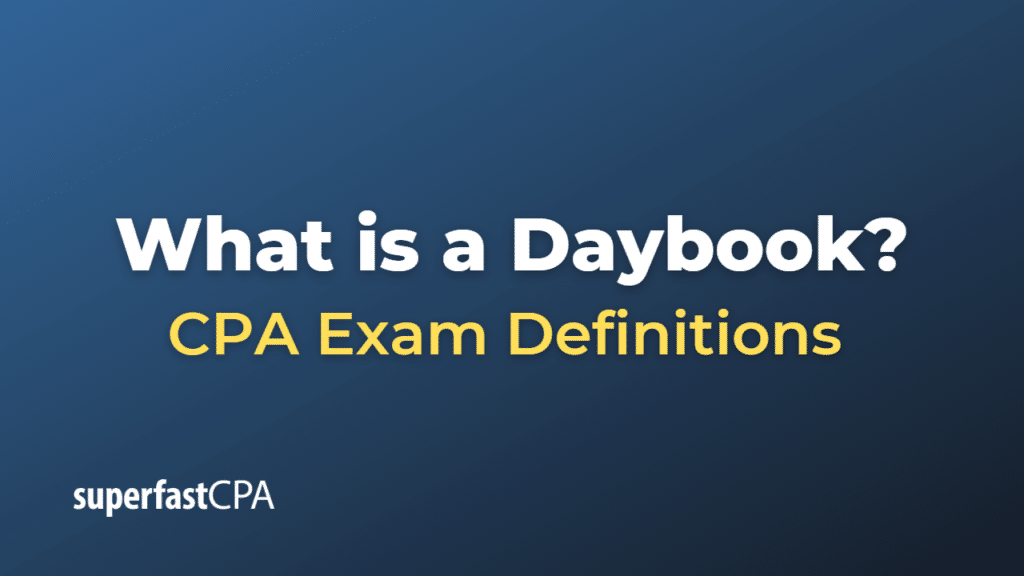Daybook
A daybook, also known as a book of original entry, is a bookkeeping record used to document all financial transactions in chronological order. Each transaction is recorded as it occurs, so the daybook contains a detailed record of the financial transactions of a business on a day-to-day basis.
There are several types of daybooks, including:
- Sales Daybook (or Sales Journal): This is used to record all the sales transactions (usually credit sales) of a business.
- Purchases Daybook (or Purchases Journal): This is used to record all the purchase transactions (usually credit purchases) of a business.
- Cash Daybook (or Cash Book): This is used to record all cash transactions – both cash receipts and cash payments. It often has two sides or columns: one for cash receipts (cash inflows) and one for cash payments (cash outflows).
- Journal Daybook (or General Journal): This is used to record transactions that cannot be entered in the sales, purchases, or cash daybooks, such as corrections of errors, depreciation, or transactions involving owner’s equity.
The entries in these daybooks are later posted to the general ledger, which is a more organized collection of a company’s accounts. The use of daybooks helps to ensure that all financial transactions are recorded, and makes it easier to review and verify the transactions.
Example of a Daybook
Let’s take the example of a small business owner who uses a sales daybook and a cash daybook to keep track of his transactions.
- Sales Daybook: Let’s say on May 1, the business owner sells a product to a customer on credit for $200. The business owner would record the following entry in his sales daybook:Date: May 1 Customer: Customer A Amount: $200 Description: Sale of Product X on credit
- Cash Daybook: Then, on May 10, the customer pays the $200 they owe. The business owner would record the following entry in his cash daybook:Date: May 10 Transaction: Receipt from Customer A Amount: $200 Description: Payment for Product X
These entries provide a record of the sales transaction and the subsequent cash receipt. At the end of the month, the business owner would post these entries to his general ledger, updating the balances of his sales and cash accounts.
The use of these daybooks allows the business owner to keep a detailed, chronological record of his transactions, which can help him manage his business, prepare financial statements, and comply with tax and accounting requirements.













